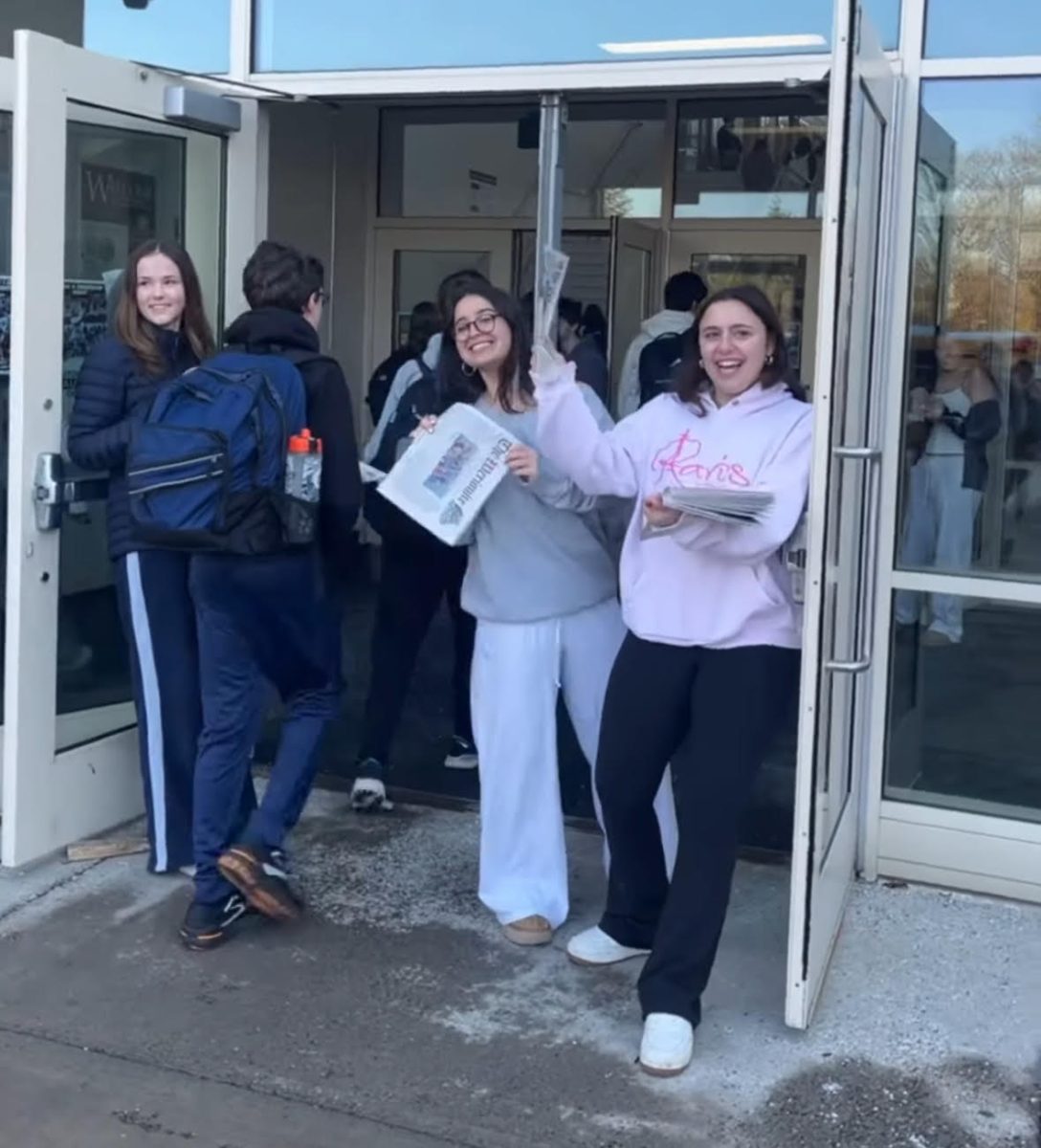
As the contract negotiations kick off once again for this school year, teachers and union representatives alike have called for a variety of topics to be remedied, improved, and adjusted. One notable debate surrounding the district employees’ health insurance started nearly three years ago, and the effects of which are still being recognized today.
The transition began back in spring of 2020—the last time contracts were re-negotiated between the budgetary committee and the LMEA union. The negotiations meetings were set with the backdrop of increasing health insurance costs district-wide, which would both limit the LMSD budget and cut deeper into employees paychecks. In order to relieve these rising healthcare costs, LMSD switched to a southeastern Pennsylvania consortium healthcare plan. Consortiums connect healthcare providers by creating a central application for employees to use. It became widely agreed upon that the plan would lower costs, decreasing portions of district employees’ salaries designated to cover healthcare plans by distributing costs. Where the pre-2020 plan solely considered LMSD employees in healthcare contract negotiations, the consortium would distribute those concentrated costs to a far wider range of recipients, thus reducing costs on employees in LMSD. Those benefits would be guaranteed to help all district employees regardless of the field in which they work; teachers, janitorial staff, campus aides, and administrators alike would benefit. However, the terms of the consortium would be non-negotiable. The union could either approve the deal, accepting the form of insurance provided by the application with all of its details, or abandon the deal, sticking with the current policy. With these conditions in mind, the LMEA went ahead with the change, committing all hires from 2020 and after to the consortium’s practices.
Combined negotiations committee member and LM social studies teacher Sania Mirzanschall says the switch made sense, explaining that “from a union perspective, when you’re in a combined negotiation, when you’re negotiating for not just teachers but everybody, you’re trying to negotiate a situation where as many people can benefit as possible.” She continues that, “joining the consortium was the most beneficial for everyone because overall, costs get reduced.”
But the 2020 deal to join the consortium isn’t incontrovertible. The consortium’s deal has a caveat. Hires before the change would be able to stay on the Preferred Provider Organization (PPO) plan while hires after 2020 would be forced to decide between the High Deductible PPO and Health Maintenance Organization (HMO) plan.
The difference between the two plans is complicated but paramount. PPO plans, the ones that have been used for years at LMSD and that any teacher hired prior to 2020 would stay on, allows employees to pick and choose their healthcare provider or practice. This means that, although LMSD might have a “network” or group of established preferred treatment facilities, hospitals, or physicians, employees on the plan are free to receive treatment coverage from any outsourced practice they choose. This empowers enrollees to pick and choose individuals with preferable facilities, more availability, or proximal locations.
By contrast, HMO plans limit employees to a select provider’s approval. Employees hired with HMOs would select from a group of providers who have agreed to stay below a maximum price. Insurance recipients would have to get any care through a reference and approval by that practitioner. This means that care from an out-of-network provider that hasn’t been referenced by an employee’s contractional physician wouldn’t be covered, with the exception of emergency and certain types of out-of-state care. HMOs can be extremely beneficial for employers seeking to save money, as costs are held low by the network approved for individuals to see.
According to Mirzanschall, however, the switch to HMO for newer hires has sparked some controversy and disagreement. She explains that “members feel like when costs are being reduced, it’s something that’s good for the district and not necessarily for them, but the reality is that when there’s a reduction in cost for the district, that is also a cost reduced from your pocket. It’s not just a matter of doing the district a favor; we’re also doing something good for everybody.” She further asserts that “with that change [in reference to joining the consortium], there were reassignments to what options were available to whom…The benefits are still the same, they’re just arranged differently.”
Looking at the 2020 Plan Comparison—provided by an anonymous source—Mirzanschall is right. The two plans have nearly equivalent benefits with some benefits being even higher under the HMO plan. The main difference is the requirement of referrals from a network provider.
Spanish teacher and 2020 hire Tara Pellegrino was one of the first group of new employees affected by the change. But this past spring, Pellegrino noted two alarming medical emergencies that required care through her insurance provider. In June, Pellegrino noticed a pain in her neck she describes as “excruciating.” When she first scheduled her doctors appointment in early June, they did not have availability until mid-July. Needing something more immediate, Pellegrino checked herself into the emergency room, knowing health insurance policies had to cover the cost no matter if they’re PPO or HMO plans. But Pellegrino says they turned her away from receiving an MRI due to her HMO plan and referred her instead to a spine specialist. Ironically, that same spine specialist requested she be seen for an MRI. When she was hired, Pellegrino chose a practitioner at the University of Pennsylvania from the insurance network. She recalls that “Because I was no longer pursuing the emergency route, I could only select from a couple practices referred by my contractional practitioner at Penn.” The closest one happened to be in Radnor, a two hour commute from Pellegrino’s home.
“I wasn’t allowed to just pick any appointment. If you have freedom of choice, I can say, ‘Oh, your next appointment is two months from now? I’m going to call somewhere else’ But with an HMO, you have to go to that place. Whatever appointment they have available is the one you need to take, which is incredibly frustrating when you need something to happen instantly.”
However, after she received the MRI, the insurance providers weren’t set on paying it unless Pellegrino received an X-Ray confirming the MRI was necessary. This meant Pellegrino, once again, had to return to the emergency room she had initially checked into. “All this while I’m in agonizing pain… It’s just extra red tape that comes with HMOs that could have been really bad if I needed medical attention right away.” Although Pellegrino first experienced her neck pain in early June, it was a month and a half before she could receive any sort of diagnosis or care.
Based on the 2020 Plan Comparison, MRI, CTA, and PET scans actually have twice the benefits under the new HMO plan than the PPO plan. Importantly, however, unlike either the High Deductible PPO or regular PPO, all benefits require referrals. This is where Pellegrino ran into struggles with her coverage—which she was on the verge of having to cover out of pocket.
This wasn’t the only time Pellegrino struggled with her HMO plan. Pellegrino had even found a lump which, based on her experience with others, she says she correctly identified as a hernia back in June. Due to a similar process with her epidural, she couldn’t schedule a surgery until mid November—one which she has yet to receive. “That’s a crazy amount of time. You know if something is really, really wrong with you, time is of the essence and with this HMO, it’s really hard.”
But time isn’t the only thing that created distress during these experiences. Pellegrino mentions that it was substantially draining on her mental health to find treatment. “It was like having a second job. Needing to go back and forth between providers, making several calls a day just to figure out if I’m going to be forced to pay out of pocket for a really expensive MRI.” Pellegrino adds that, “this is from someone who knows the system; if you don’t, it’s that much harder.” Pellegrino says every other job she’s worked provided a PPO except when she was on welfare, and it’s only because she’s been on the HMO plan before that she has a solid understanding of it.
Pellegrino is clear that she isn’t against the health insurance plan at all. “I’m very grateful. It’s not a bad plan, it’s just inefficient.”
All that said, Pellegrino acknowledges the benefits. She says everyone did benefit from a decrease in healthcare costs—just at the expense of new teachers. “Even though everyone benefited from higher pay, the older hires got the higher pay and to keep their great insurance.” The debate over the policies will likely continue, and, as Mirzanschall points out, as new and young hires become older and deal with increasing need for medical insurance, surely sparking debate. As this year is a contract negotiation year for the LMEA union, we don’t and won’t know the hot button topics until they are settled next summer. However, given the controversy regarding the new healthcare policy, such areas of discussion are certainly something to keep an eye on.







